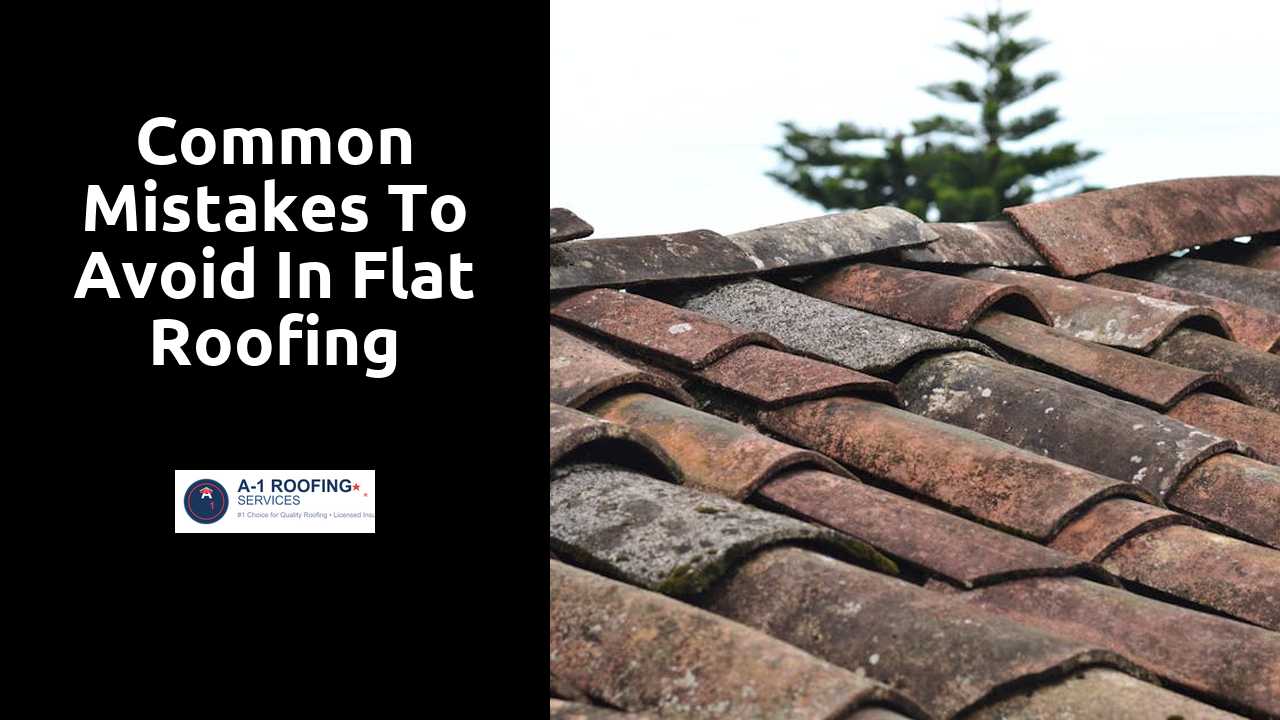
Common Mistakes to Avoid in Flat Roofing
Table Of Contents
Poor Installation Techniques
Flat roofing systems require precise installation to ensure longevity and performance. Common mistakes include inadequate seam sealing and improper membrane placement. For instance, failing to overlap seams correctly can lead to leaks. Insufficient attachment of the roofing material can cause it to lift during high winds. These mistakes can result in costly repairs down the line.
Attention to detail during the installation process is essential. Using the wrong type of fasteners or not securing them properly may compromise the roof's effectiveness. Additionally, applying roofing materials in extreme temperatures can affect their adhesion and durability. A thorough understanding of the materials and techniques is crucial to avoid these pitfalls, ensuring a well-installed roof that stands the test of time.
Check out this site for more information.
Best Practices for Flat Roofing Installation
Attention to detail is crucial when installing flat roofing systems. Properly preparing the roof deck ensures a solid foundation. Any debris, moisture, or uneven surfaces can lead to significant problems later on. Installing a vapor barrier can prevent moisture buildup, which will extend the life of the roof. Additionally, choosing appropriate materials is essential. High-quality membranes designed for flat roofs can withstand various weather conditions and reduce the likelihood of leaks.
Using the correct installation methods is just as important as selecting the right materials. Contractors should follow manufacturer guidelines closely to ensure optimal performance. A common practice involves overlapping seams and sealing them adequately to avoid water infiltration. It's also advisable to consider proper drainage systems. Ensuring that water flows away from the roof instead of pooling can prevent excess weight and subsequent damage. Regular inspections during and after installation can help identify any potential issues early on.
Failing to Address Existing Damage
Many property owners underestimate the importance of addressing existing damage before embarking on a flat roofing installation. Neglecting issues such as leaks, punctures, or structural weaknesses can lead to further complications down the line. For instance, a small leak can worsen over time, potentially causing water damage to interior walls and leading to mold growth. Addressing these concerns proactively can save significant time and money in repairs later.
Existing damage can compromise the integrity of a new roofing system. Installing a new roof over a damaged surface may not provide the intended durability and protection. Without proper repairs, issues can re-emerge, undermining the effectiveness of the new installation. Conducting a thorough inspection and necessary repairs ensures a solid foundation for the new roofing, maximizing both its lifespan and performance.
Importance of Repairing Underlying Issues
Addressing existing damage before installing a flat roof is crucial for ensuring long-term performance. Ignoring underlying issues can lead to more significant problems down the line, including leaks and structural damage. Moisture can easily penetrate weakened areas, compromising the integrity of the new roofing system. Proper repairs not only enhance the lifespan of the roof but also provide a solid foundation for the installation process.
Inadequate attention to underlying issues can result in compounded repair costs and potential safety hazards. Addressing problems such as rot, mold, or deteriorated insulation beforehand prevents further deterioration. Taking the time to assess and mend these issues creates a more reliable roofing system. Homeowners can enjoy peace of mind knowing their investment will stand up to the elements when foundations are handled correctly.
Ignoring Local Climate Considerations
Climate plays a crucial role in roofing performance, particularly for flat roofs. Certain materials may thrive in specific environments while faltering in others. For instance, a roofing system that works well in areas with minimal rainfall might not stand up to heavy precipitation or snow accumulation. Adequate drainage solutions become even more critical in regions prone to water pooling or flooding.
Beyond moisture levels, temperature fluctuations also affect roofing materials. Hot climates can cause materials to expand and contract, leading to cracks and degradation over time. Conversely, cold environments might require insulation to prevent ice dam formation and heat loss. Taking local weather patterns into account helps homeowners select appropriate materials and installation techniques, ultimately prolonging the life of a flat roofing system.
Adapting Roofing Choices to Your Environment
Assessing local climate conditions is crucial when selecting materials for flat roofing. Regions with heavy rainfall may benefit from membranes that offer superior waterproofing capabilities. In contrast, areas experiencing high temperatures require products that demonstrate excellent UV resistance. Understanding the specific weather patterns can guide homeowners in making informed decisions that enhance the longevity of the roof.
Additionally, local building codes may influence roofing choices. Regulations often dictate specific materials that are either permitted or recommended for certain environments. Homeowners should familiarize themselves with these codes to ensure compliance and avoid future penalties. Consulting with professionals familiar with both local weather conditions and regulations can help tailor roofing solutions that effectively meet both aesthetic and functional requirements.
Related Links
Understanding Drainage Solutions for Flat RoofsMaterials Selection for Durable Flat Roofs